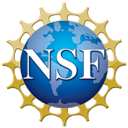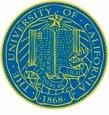Dynamic Nucleic Acid Systems lab
"I got an idea, an idea so smart my head would explode if I even began to know what I was talking about... " Family guy
Our group focuses on 3 broad research areas.
Nucleic acid condensates
The discovery of membraneless cellular organelles has revolutionized our understanding
of cellular biology and disease. These organelles, also known as biomolecular condensates,
are aggregates of proteins and RNA that form and dissolve spontaneously inside cells, creating dynamic,
reconfigurable compartments that isolate and regulate molecules, genes, and cellular processes.
The malfunction of molecular condensation is associated with cellular stress and diseases such as Alzheimer’s Disease and ALS.
There is now intense interest in developing tools to harness cellular condensation, as well as to build biomolecular
materials that recapitulate the properties of cellular condensates.
Our lab is developing DNA and RNA motifs that undergo phase separation, with the goal of controlling the formation and dissolution of condensates via chemical reactions.
DNA and RNA organelles that form at specific times and locations, and designed to carry particular binding partners
have many exciting applications in the control of gene expression, in bioproduction, and in imaging
cellular organization.
Dynamic self-assembly of DNA and RNA structures
Biological cells grow, divide, and move thanks to a suite of self-assembling components that actively respond to
environmental stimuli. Our goal is to recapitulate the cellular architecture underlying shape control
with programmable building blocks: DNA and RNA molecules, as well as sensors and signaling pathways that regulate their assembly.
We are developing methods to direct assembly of nucleic acid nanostructures
with the goal of making dynamic scaffolds that can perform physical work at the micron-scale.
Molecular dynamical systems and controllers
We are interested in design principles underlying complex dynamic behaviors of biologial systems
at the scale of molecular networks and indiviual cells.
We follow a constructionist approach: we design molecular networks,
derive mathematical models to describe what they do, and we build them in a test tube.
Our favorite molecules are DNA and RNA, because we understand very well how to program their
binding and folding pathways as a function of sequence.
We also use a few classes of proteins that are well characterized by biologists.
In particular we work on in vitro RNA networks, because they could be converted into molecular computers for cells.
We have built molecular circuits that can behave as clocks, switches, pulse generators, and sensors and we are developing methods to build closed loop molecular PID controllers.
Current funding
NIH 1R35GM155833-01, Sloan Foundation G-2024-22575, NSF/FM 2134772, NSF/CCF 2107483, NSF/BBSRC BIO award 2020039, Department of Energy DE-SC0010595Expired
Sloan Foundation G-2021-16831, NSF CAREER award DMR 1450747, NSF CMMI 1266402, DARPA HR0011-16-C-0134

|

|

|

|

|